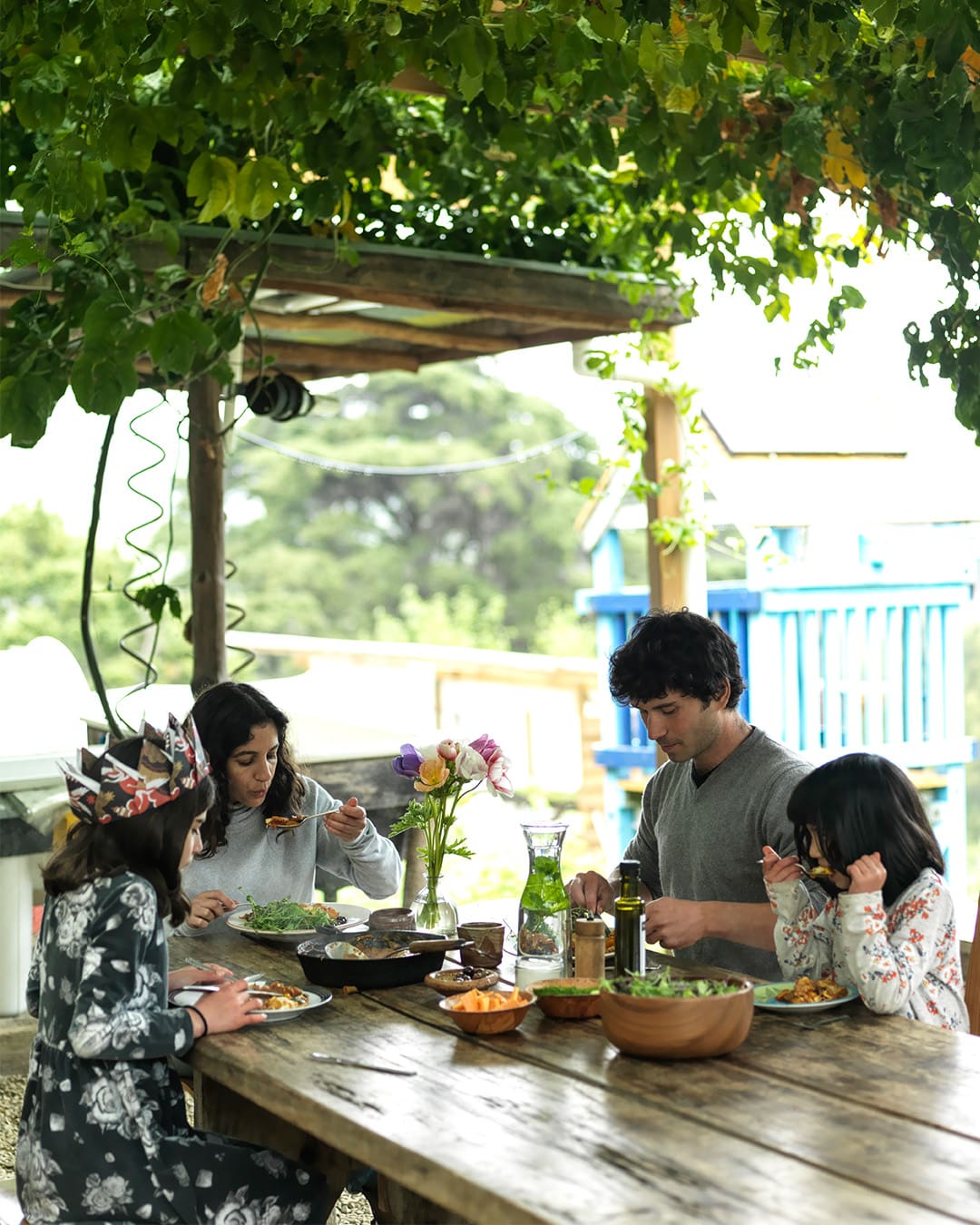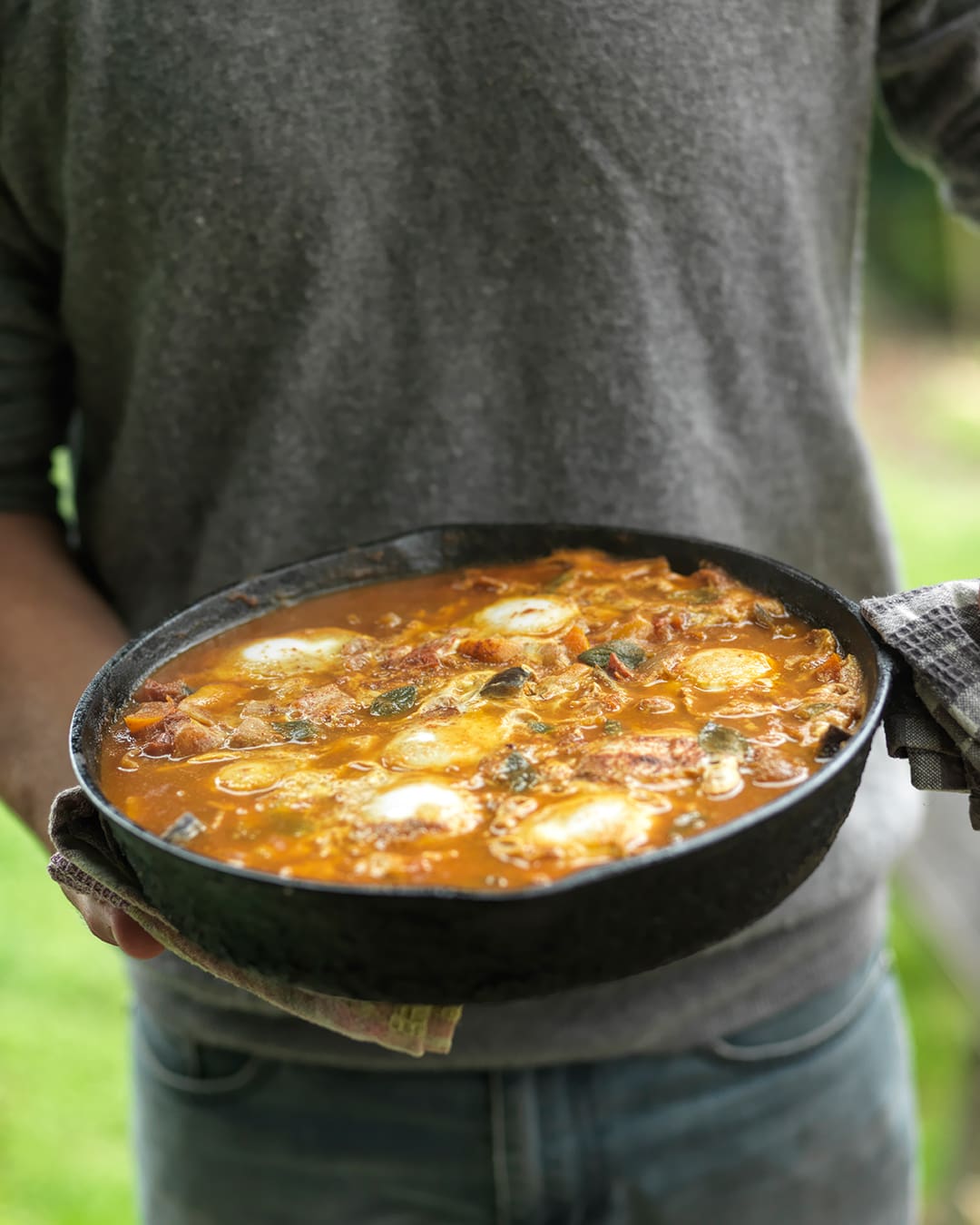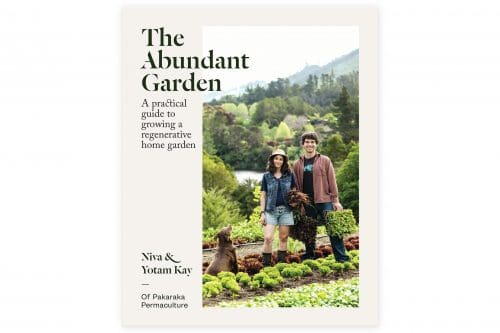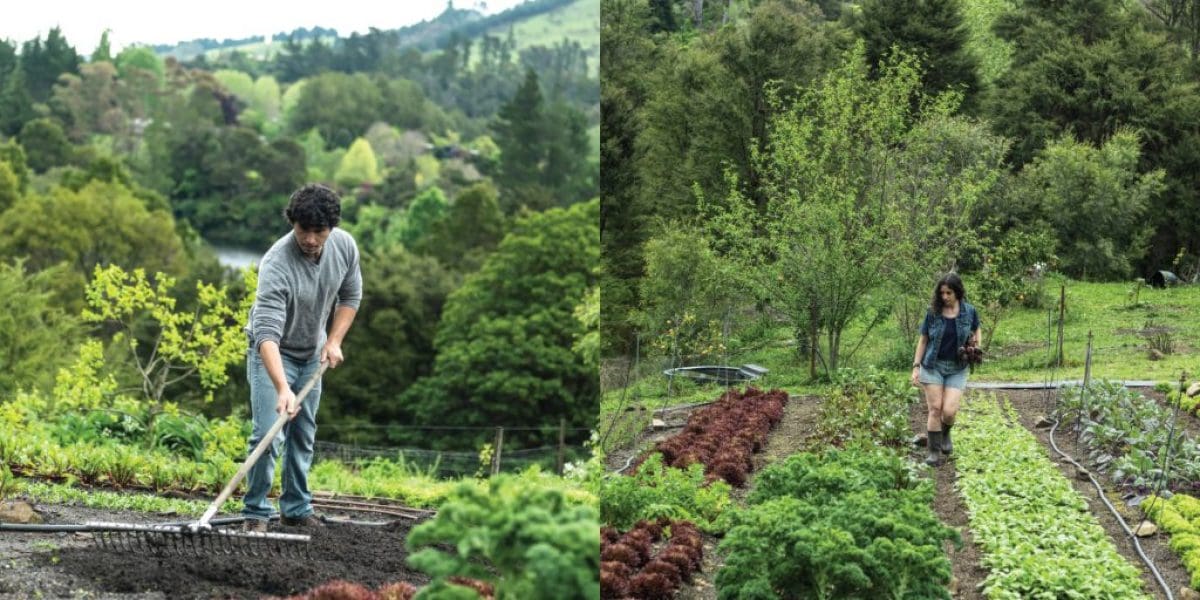The Abundant Garden: Holistic Harvests
You may have heard the terms ‘regenerative gardening’ or ‘permaculture’ in recent years. The gardening philosophy, which has become more popular in recent years, with the call to better look after our environment and a wide-reaching desire to become more self-sustaining, is based on the idea of taking the lead from natural pre-existing ecosystems and taking a more holistic approach when designing a garden.
While it has seen a surge in popularity in recent years, there have been many people who have been adapting to this way of gardening well before its prevalence in the mainstream, harnessing the techniques and knowledge of indigenous cultures that the methods of permaculture are rooted in. Among those are Coromandel-based couple, Niva and Yotam Kay, who run Pakaraka Permaculture on an off-grid farm near Thames, where they manage a ¼ acre market garden, as well as hold a set of courses teaching the methods of regenerative gardening. The couple have been studying and practicing permaculture together since they met while studying interdisciplinary environmental studies in 2006. Earlier this year, they also released a book called The Abundant Garden: A practical guide to growing a regenerative home garden, which gives readers incredibly detailed insight into establishing and maintaining a garden in line with permaculture practices. As well as offering strategies and techniques on maximising your harvest, including useful charts to help you plan and plant your garden year-round, the book also includes a section on fermenting and preserving your yields to keep your pantry stocked through those cooler months (see below for a great Shakshuka recipe from Niva and Yotam).
We spoke to Niva and Yotam about what drew them to this method of gardening, the lessons they have learnt through their permaculture journey and how these practices can be applied beyond the garden.

For the uninitiated, can you briefly explain what Permaculture and regenerative gardening is?
Permaculture is a design system that uses a set of ethics, principles and design tools to create sustainable systems. It is often used in land management systems, such as gardening, but is not limited to it.
Regenerative agriculture and gardening put a strong focus on building topsoil, carbon sequestration and caring for the living soil ecosystem.
What drew you to Permaculture gardening?
As environmentalists, gardening through a Permaculture lens seemed fascinating. Working with natural systems and processes to produce a diversified abundance from the same space with less work? We are in! Permaculture is based on observations and feedback loops and so it was lots of fun to experiment and learn what worked for us.
Looking through your new book, The Abundant Garden, the amount of detail within it is amazing. Did you learn this through study or did it all come from trial and error in the garden?
Thank you. Over the 15 years we have been gardening, we’ve had many teachers and mentors, and we were also inspired by books written by many passionate gardeners from all over the world. But nothing can replace the learning that happens on the ground, and there is definitely a lot of trial and error involved in our learning.
We look at every gardening season as an opportunity to learn more, try new things and fine-tune our gardening techniques.
Permaculture is more than a method of gardening, its principles can be applied beyond the garden. How have you harnessed the philosophies of Permaculture and applied it to other areas of your life?
The Permaculture ethics; earth care, people care and fair share, are at the heart of everything we do, and we always seek to make decisions that align with these values in both our personal and professional lives.
We have also found many of the more specific design principles and tools useful in other contexts, including developing educational materials, thinking about energy use, project planning and event production. We even made an elaborate permaculture design to plan our wedding day.
What was your biggest surprise when you started growing a regenerative garden?
We are fortunate that as teenagers, from the very beginning of our gardening careers, we were immersed in organic gardening. Caring for the soil had always been the basis of our gardening systems, but one thing that really delighted us was learning about how plants release sugars directly to the soil to feed and attract the soils microorganisms of their choice.
What do you find are the biggest struggles when starting a regenerative garden?
One of the biggest struggles for people is getting rid of the existing ground cover, which often includes grass and other perennials. Luckily there are many ways to do this without using toxic sprays. We mostly prefer to simply mow the vegetation and to cover it with weedmat, tarps or heavy mulch that prevents light from reaching those plants and let time do its thing.
Modern Permaculture practices borrow heavily from Indigenous knowledge. How do you think modern society could benefit from listening to and harnessing indigenous methods?
This is a great question. There are many ways and reasons that we should be listening to and following indigenous leadership. Permaculture relies heavily on indigenous knowledge, using a values-based lens that is applicable regardless of location.
However, there is in addition to that the wealth of knowledge, wisdom and cultural traditions that indigenous people have that are place specific. In Aotearoa New Zealand, if the government was to really respect Te Tiriti o Waitangi and listen to Tangata Whenua, who are the kaitiaki of the land, we will all benefit from the result.
After being part of the Permaculture movement for so long, have you seen it gain more recognition and momentum in recent times?
Definitely, as the multiple ecological and social crises we are facing become more and more apparent, people are seeking alternatives to the extractive mindset and industrial model. Permaculture is one of those alternatives applicable in many settings and attracts individuals from many walks of life.
You run Permaculture and regenerative gardening courses at your home at Pakaraka Permaculture on the Coromandel Peninsula. What has the response been to the courses from attendees?
The response has been really great and heartwarming. Our favourite thing to hear is when people find the information accessible, easy to understand and more achievable than they had thought it might be, so they feel empowered to try it out.
This is also what we had aspired to do with The Abundant Garden, to make the information clear and easily accessible. We organised the book in a way that makes it easy to go back to again and again for reference. We made sure to both explain how we do things and why, and offer alternatives that fit people in situations that are different to ours.
Your book also looks into how you can utilise the garden’s bounties to last beyond the season through pickling and fermenting. Besides its ability to keep your pantry stocked during winter, what other benefits are there to preserving food this way?
Fermentation offers many benefits, including introducing probiotic microorganisms to the digestive system, which are an essential part of a healthy digestive system. During the fermentation process, microorganisms break and change the food composition in ways that make certain foods easier to digest and sometimes make it easier for the body to access certain nutrients.
What do you consider a must-have for anyone looking to get into Permaculture gardening?
A willingness to take time to listen and observe before taking action. And when taking action, to start small and then observe again. There are no cookie-cutter solutions!
Shakshuka Base
(Summer Vegetables Preserve)
Shakshuka is one of our favourite preserves to have available for winter. This recipe comes from Yotam’s grandma, Blanche, who always serves shakshuka as a first course at the family’s Friday night meals, as a dip with fresh pita bread.
Shakshuka is perfect for making when the garden is overflowing with capsicum, eggplants and tomatoes. You can use it later as an upgraded version of tomato paste, or as the base to make shakshuka with eggs.

Ingredients (for a 6-litre pot):
- 6-7 large onions, diced
- 4 large capsicums, diced
- 3-6 chillies, depending on taste
- 3 large or 4 medium to large eggplants, cut into small pieces
- 10 large tomatoes, or equivalent of any variety, diced
- Salt
- 4 tablespoons sweet paprika
How-to:
- In a large pot, sauté onions in oil of your choice until they turn yellow.
- Add the capsicum, chilli, eggplant and tomatoes, and bring to a slow boil without any additional water.
- Add the salt and sweet paprika and cook on low heat for about an hour.
- Remove from the stove.
- While hot, pour into glass jars that have been sterilised and preheated and place the lid. We sanitise the jars by slowly bringing them to a boil in a large pot of water, and keeping them warm to avoid rapid temperature changes when filling them with sauce that can break the glass jars.
- To pasteurise and can the shakshuka, fit the full jars inside in a large pot. Cover the jars with water, slowly bringing the pot to a boil, and simmering on low heat for 10 minutes. The jars will store well at room temperature, with no refrigeration, for a couple of years.
- Yotam’s grandma cooks about 20 litres of shakshuka at a time, lets it cool, then fills enough bags to freeze for a six-month supply. She fills the bags three-quarters full, and places them in the freezer with a bit of space between them so they don’t freeze together.
To make shakshuka with eggs, a simply delicious Middle Eastern dish, use the following recipe:
- In a deep pan or wide pot, cook the shakshuka base and bring it to the boil. Preserved shakshuka might be slightly too thick, in which case you will need to add a bit of water.
Add olive oil, spices and herbs for flavour. We love including plenty of basil and parsley. - Once the shakshuka boils, break eggs into a cup one at a time, 2 eggs per person. Use a spoon to make room for the eggs in the sauce. Carefully place each egg in the pan, so that it is nicely embedded in the shakshuka base.
- Place a lid on the pan and let the eggs poach for a few minutes on low heat. We prefer to enjoy shakshuka while the eggs yolks are a bit runny.
- Serve immediately. This dish is often enjoyed with a fresh loaf of bread or pita bread, which you can use to mop up the sauce.

